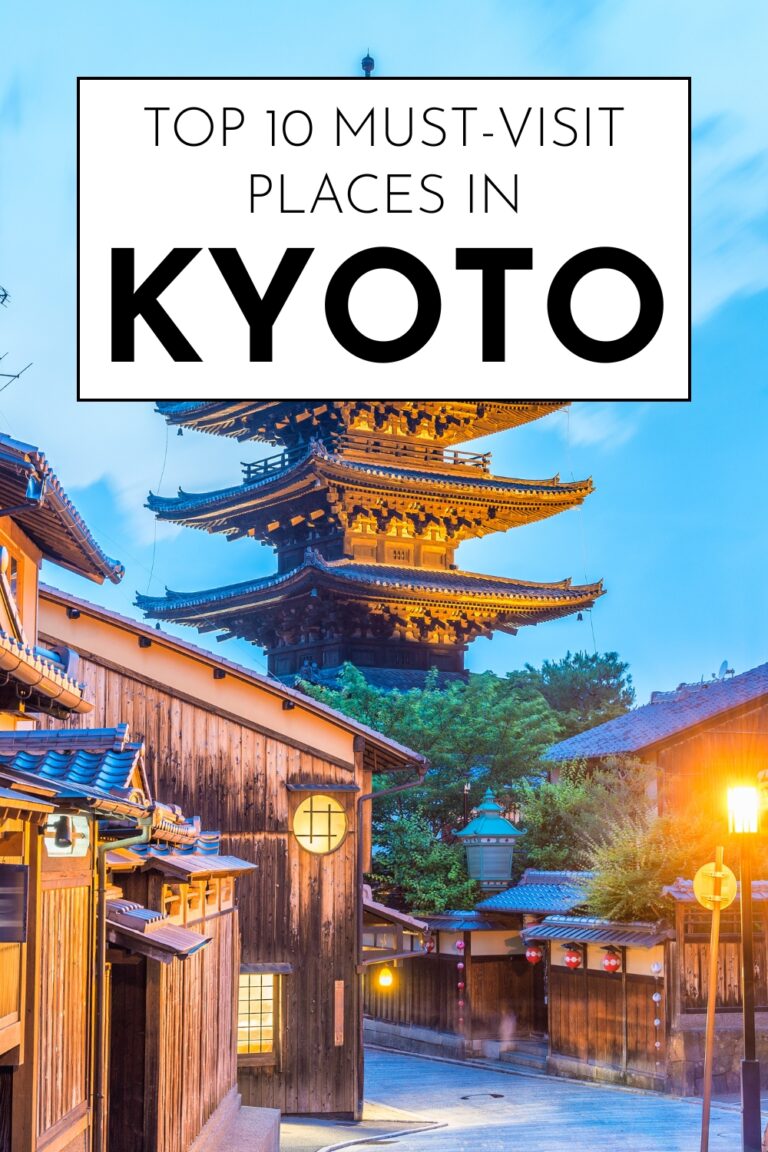Kyoto, Japan’s former imperial capital, stands as a living testament to the country’s rich cultural heritage and timeless beauty. This enchanting city seamlessly blends over 1,000 years of history with modern Japanese life, creating an atmosphere that captivates millions of visitors each year.
Known as the “City of Ten Thousand Shrines,” Kyoto houses approximately 2,000 temples and shrines, each telling unique stories of Japan’s spiritual and cultural evolution. From the iconic golden pavilion reflecting in tranquil waters to hidden bamboo groves that transport you to another world, Kyoto offers experiences that touch the soul and create lasting memories.
Whether you’re seeking spiritual enlightenment through Zen meditation, cultural immersion in traditional tea ceremonies, or simply the breathtaking beauty of cherry blossoms in spring, Kyoto delivers authentic Japanese experiences that modern cities cannot replicate.
Let’s explore the ten most spectacular destinations that make Kyoto an essential pilgrimage for anyone seeking to understand the heart of traditional Japan.
1. Kiyomizu-dera Temple – Wooden Wonder with Panoramic Views
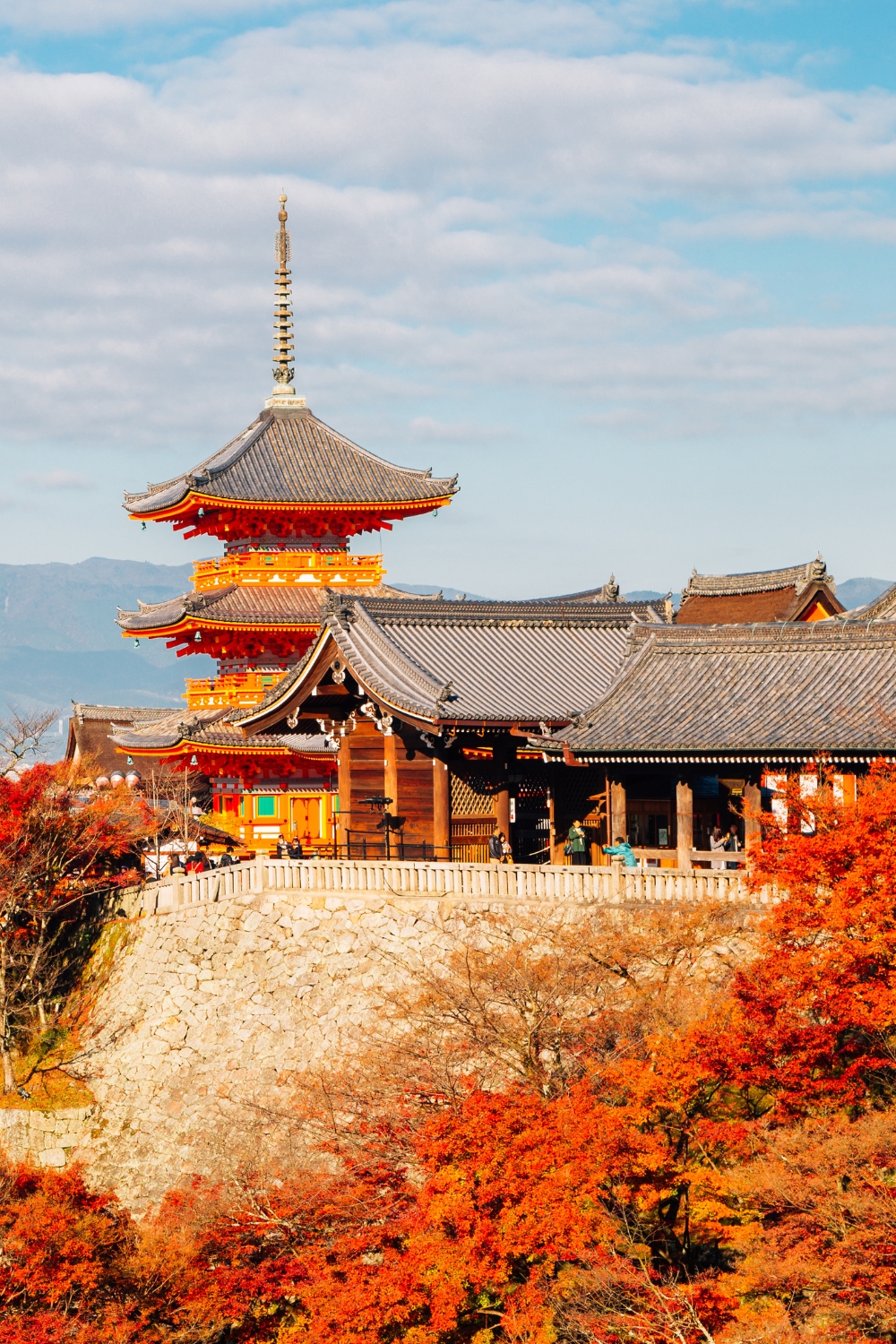
Perched on the hillside of eastern Kyoto, Kiyomizu-dera Temple stands as one of Japan’s most celebrated architectural marvels. This UNESCO World Heritage site, built in 778 AD, showcases traditional Japanese craftsmanship at its finest, constructed entirely without using a single nail.
Architectural Marvel and Historical Significance
The temple’s main hall juts out 13 meters above the hillside, supported by an intricate wooden framework that has withstood earthquakes and centuries of weather. This engineering masterpiece offers breathtaking views of Kyoto city and the surrounding mountains, creating one of Japan’s most photographed vistas.
The temple’s name translates to “Pure Water Temple,” referring to the Otowa Waterfall that flows beneath the main hall. Visitors traditionally drink from three streams of water, each believed to grant different wishes: longevity, academic success, and love fortune.
Seasonal Beauty and Cultural Experiences
Kiyomizu-dera transforms with each season, offering unique experiences throughout the year. Spring brings cherry blossoms that frame the temple in pink clouds, while autumn paints the surrounding maple trees in brilliant reds and golds. Special evening illuminations during peak seasons create magical nighttime visits.
Best visiting times: Early morning (6-8 AM) or late afternoon for optimal lighting
Entry fee: 400 yen for adults
Special events: Evening illuminations during spring and autumn
Cultural significance: UNESCO World Heritage Site since 1994
2. Fushimi Inari Shrine – Ten Thousand Vermillion Gates

Fushimi Inari Shrine creates one of the world’s most mesmerizing spiritual experiences through its famous tunnels of vermillion torii gates. This sacred site, dedicated to Inari, the Shinto god of rice and prosperity, features over 10,000 torii gates that wind up the mountainside for four kilometers.
Spiritual Journey Through Sacred Tunnels
The shrine’s network of trails leads visitors through dense forests of bamboo and cedar trees, with torii gates creating tunnels of vibrant orange-red color. Each gate represents a donation from individuals or businesses seeking blessings for prosperity and success.
The main trail takes approximately 2-3 hours to complete, leading to the summit of Mount Inari at 233 meters above sea level. Along the way, smaller shrines, fox statues (messengers of Inari), and rest stations provide opportunities for contemplation and refreshment.
24-Hour Access and Photography Paradise
Unlike most temples and shrines, Fushimi Inari remains open 24 hours daily, making it perfect for photography enthusiasts seeking the perfect shot. Early morning visits (5-7 AM) offer the best experience with fewer crowds and mystical morning light filtering through the gates.
The shrine’s popularity has grown dramatically due to social media, but its spiritual significance remains unchanged. Local worshippers still visit daily to pray for business success and family prosperity.
Operating hours: 24 hours daily
Entry fee: Free
Best photography time: Early morning or late afternoon
Cultural tip: Bow before entering and after leaving shrine grounds
3. Arashiyama Bamboo Grove – Natural Cathedral

The Arashiyama Bamboo Grove creates a natural cathedral where thousands of towering bamboo stalks filter sunlight into ethereal green patterns. This otherworldly forest, located in western Kyoto, offers a sensory experience that has inspired artists and poets for centuries.
Acoustic Wonder and Natural Beauty
The bamboo grove produces unique acoustic properties as wind passes through the stalks, creating gentle rustling sounds that the Japanese government has designated as one of the “100 Soundscapes of Japan.” This natural music adds to the grove’s meditative atmosphere.
The main path through the grove stretches approximately 500 meters, creating a natural tunnel of green bamboo reaching heights of 20 meters. The filtered sunlight creates constantly changing patterns on the pathway, making each visit unique regardless of the time of day.
Seasonal Experiences and Nearby Attractions
While beautiful year-round, the bamboo grove offers different experiences each season. Spring brings fresh green shoots, summer provides cool shade from heat, autumn filters golden light, and winter creates stark beauty with occasional snow.
The grove connects to several other Arashiyama attractions, including Tenryu-ji Temple (a UNESCO World Heritage site), traditional Japanese gardens, and the Hozu River, making it perfect for a full day of exploration.
Best visiting time: Early morning (7-9 AM) for fewer crowds
Duration: 15-30 minutes for main path
Nearby attractions: Tenryu-ji Temple, Togetsukyo Bridge, monkey park
Access: JR Saga-Arashiyama Station or Hankyu Arashiyama Station
4. Kinkaku-ji (Golden Pavilion) – Kyoto’s Most Iconic Temple

Kinkaku-ji, officially known as Rokuon-ji, represents Kyoto’s most recognizable landmark and one of Japan’s most photographed buildings. This three-story golden pavilion, completely covered in gold leaf, creates perfect reflections in the surrounding pond, embodying the essence of Japanese aesthetic principles.
Architectural Perfection and Golden Splendor
Originally built in 1397 as a retirement villa for Shogun Ashikaga Yoshimitsu, the pavilion showcases three distinct architectural styles on each floor. The first floor reflects Heian period palace style, the second floor represents samurai architecture, and the third floor embodies Zen temple design.
The building’s exterior is covered in pure gold leaf, which not only creates stunning visual impact but also serves practical purposes by protecting the wooden structure from weather damage. The gold catches and reflects light differently throughout the day, creating ever-changing photographic opportunities.
Gardens and Seasonal Beauty
The temple sits within meticulously designed gardens that complement the golden pavilion perfectly. The mirror-like pond reflects the building and surrounding pine trees, creating the iconic image that appears on countless postcards and travel brochures.
Each season transforms the temple’s appearance dramatically. Spring cherry blossoms create pink frames around the golden structure, summer’s green foliage provides contrast, autumn’s red maple leaves complement the gold, and winter snow creates striking white and gold compositions.
Best photography time: Early morning (8-9 AM) for optimal lighting
Entry fee: 400 yen for adults
Seasonal highlights: Cherry blossoms (April), autumn colors (November)
Photography tip: Multiple viewpoints around the pond offer different perspectives
5. Gion District – Traditional Geisha Culture
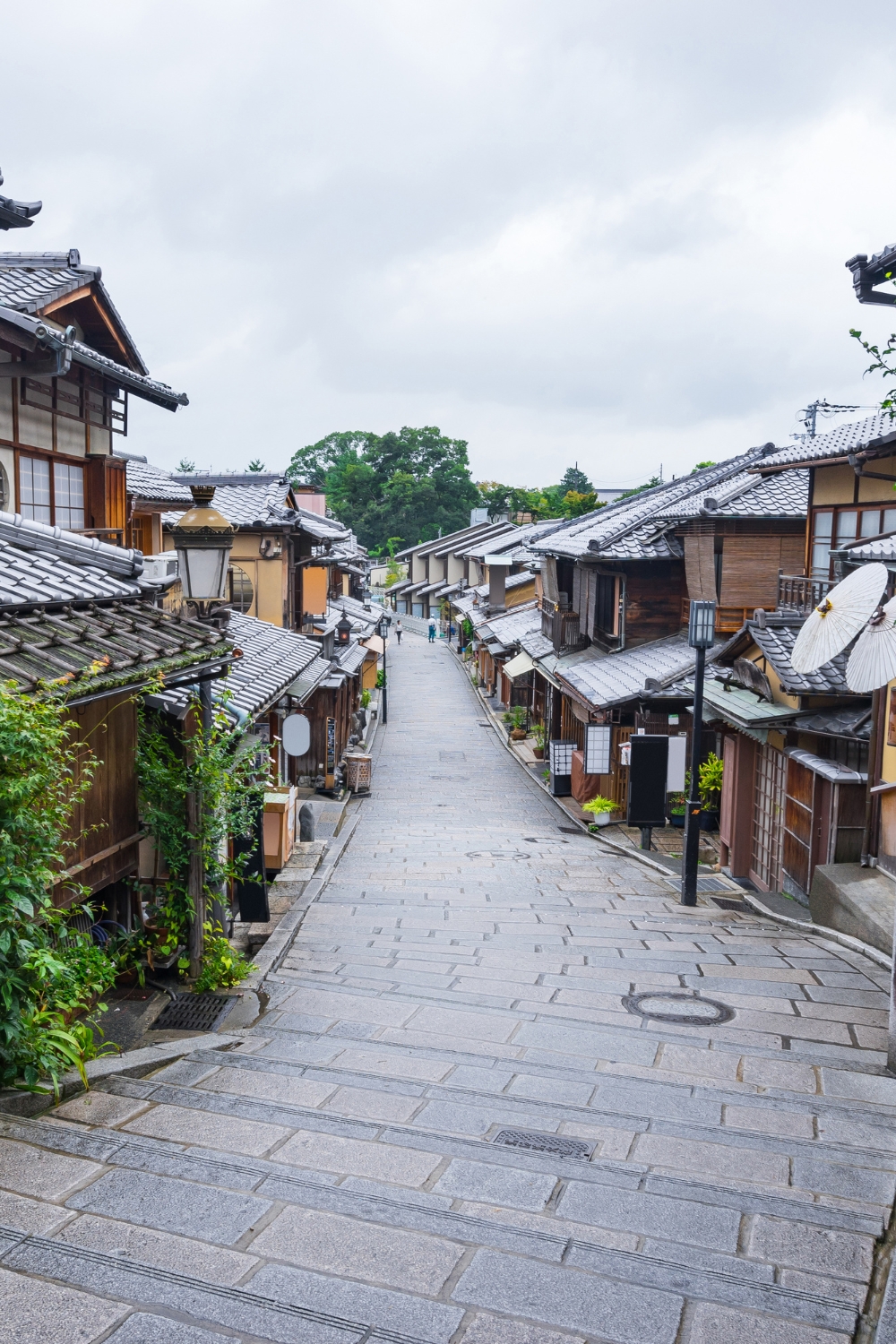
The Gion district preserves Kyoto’s traditional entertainment culture, where geishas (called “geiko” in Kyoto) and apprentice geishas (maiko) still train in classical arts and entertain guests in traditional ochaya (tea houses). This historic district maintains its Edo period atmosphere through preserved architecture and continuing traditions.
Authentic Geisha Culture and Traditional Arts
Gion remains one of Japan’s most exclusive geisha districts, where authentic traditional culture continues to thrive. The district’s geiko and maiko undergo years of rigorous training in classical dance, music, tea ceremony, and conversation arts before serving clients in exclusive tea houses.
Visitors can observe geishas traveling between appointments, especially during early evening hours (5-7 PM) when they head to their evening engagements. The sight of a maiko in full traditional dress walking along historic streets creates magical moments that transport visitors back centuries.
Historical Architecture and Cultural Preservation
The district’s traditional wooden machiya (townhouses) and ochaya maintain their original architecture through strict preservation laws. These buildings, some over 300 years old, showcase traditional Japanese craftsmanship and design principles.
Hanami-koji Street serves as Gion’s main thoroughfare, lined with traditional restaurants, tea houses, and shops selling cultural items. The street maintains its historical character while accommodating modern visitors seeking authentic cultural experiences.
Best viewing times: Early evening (5-7 PM) for geisha spotting
Photography etiquette: Ask permission before photographing geishas
Cultural experiences: Traditional tea ceremonies, kaiseki dining
Preservation status: Historic preservation district
6. Philosopher’s Path – Meditative Cherry Blossom Walk

The Philosopher’s Path (Tetsugaku-no-michi) creates one of Kyoto’s most contemplative walking experiences, following a canal lined with hundreds of cherry trees for approximately 2 kilometers. This peaceful pathway connects several important temples and shrines while providing space for reflection and meditation.
Historical Significance and Philosophical Inspiration
Named after philosopher Nishida Kitaro, who used this path for daily meditation walks, the route has inspired countless thinkers, artists, and writers. The path embodies the Japanese concept of “mono no aware” (the pathos of things), encouraging visitors to appreciate the transient beauty of nature.
The stone pathway follows the canal originally constructed during the Heian period (794-1185) for transportation and irrigation. Today, the canal provides a peaceful water feature that enhances the meditative atmosphere of the walk.
Seasonal Transformations and Temple Connections
Spring transforms the Philosopher’s Path into one of Japan’s premier cherry blossom viewing locations. Over 400 cherry trees create pink tunnels above the pathway, with fallen petals floating on the canal like nature’s confetti.
The path connects significant temples including Ginkaku-ji (Silver Pavilion) at the northern end and Nanzen-ji Temple at the southern terminus. This connection allows visitors to combine spiritual experiences with natural beauty in a single journey.
Best season: Spring (early April) for cherry blossoms
Walking time: 45-60 minutes at leisurely pace
Connected attractions: Ginkaku-ji, Nanzen-ji, Honen-in Temple
Facilities: Cafes, small shops, and rest areas along the route
7. Sanjusangen-do Temple – Hall of 1,001 Buddhas
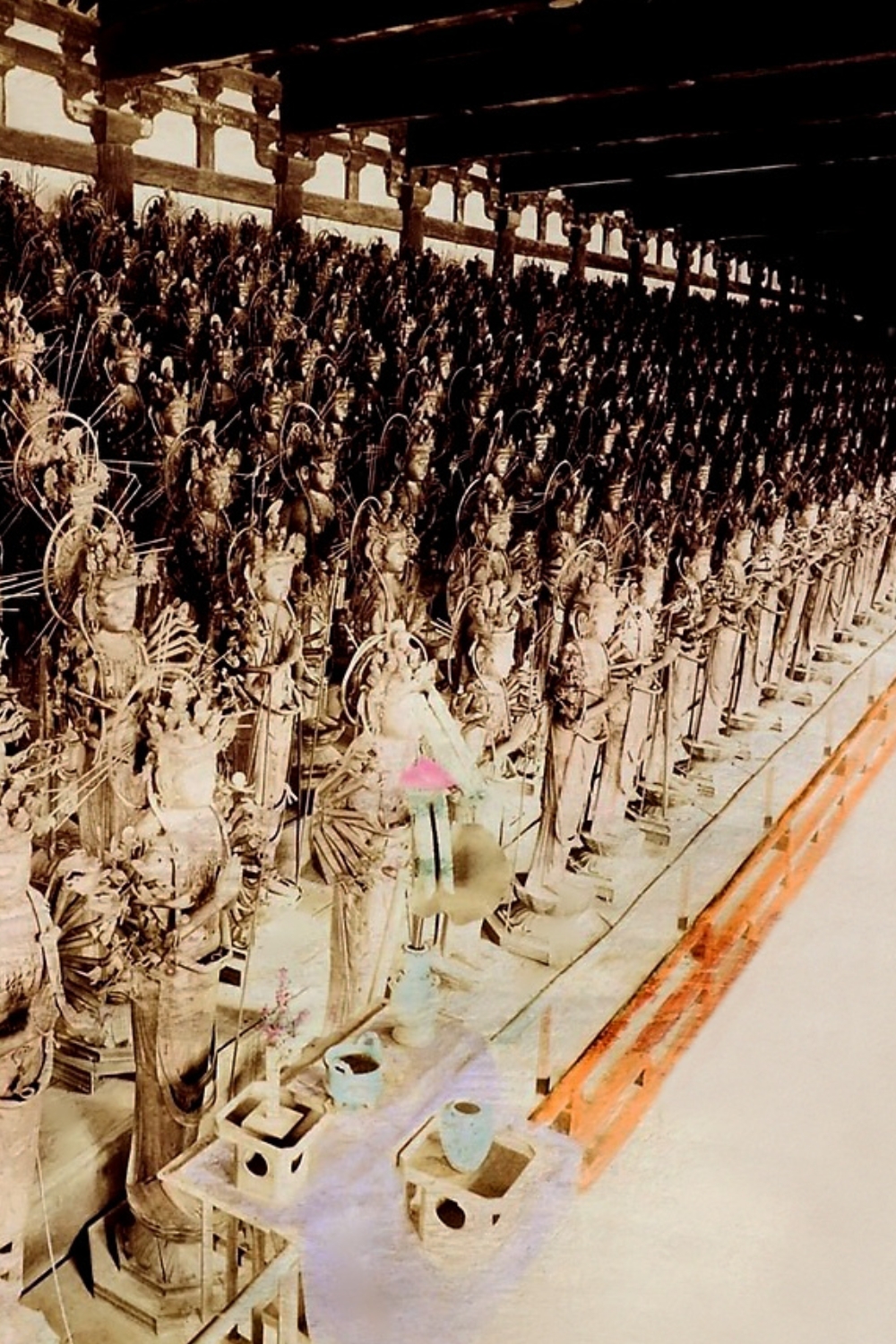
Sanjusangen-do Temple houses one of Japan’s most awe-inspiring religious displays: 1,001 statues of Kannon, the goddess of mercy, arranged in a 120-meter-long hall. This architectural and spiritual masterpiece creates an overwhelming sense of divine presence and artistic achievement.
Architectural Marvel and Spiritual Significance
The temple’s main hall ranks as one of the longest wooden structures in the world, stretching 120 meters in length. Built in 1164, the hall demonstrates exceptional Japanese carpentry techniques and has survived multiple earthquakes and fires through careful maintenance and restoration.
The central statue, carved by master sculptor Tankei, stands 3.3 meters tall and is flanked by 1,000 smaller Kannon statues, each with unique facial expressions and hand positions. The name “Sanjusangen-do” refers to the 33 spaces between the building’s pillars.
Artistic Mastery and Cultural Heritage
Each of the 1,001 statues represents a different manifestation of Kannon’s compassion, creating a powerful visual representation of Buddhist concepts of infinite mercy. The statues are accompanied by 28 guardian deities, creating a complete mandala within the temple hall.
The temple also houses important cultural artifacts, including armor, weapons, and religious objects that demonstrate the intersection of Buddhist spirituality and samurai culture during Japan’s medieval period.
Entry fee: 600 yen for adults
Photography: Prohibited inside the main hall
Special events: Archery ceremony on January 15th
Cultural significance: National Treasure designation
8. Nijo Castle – Shogun’s Palace and Gardens
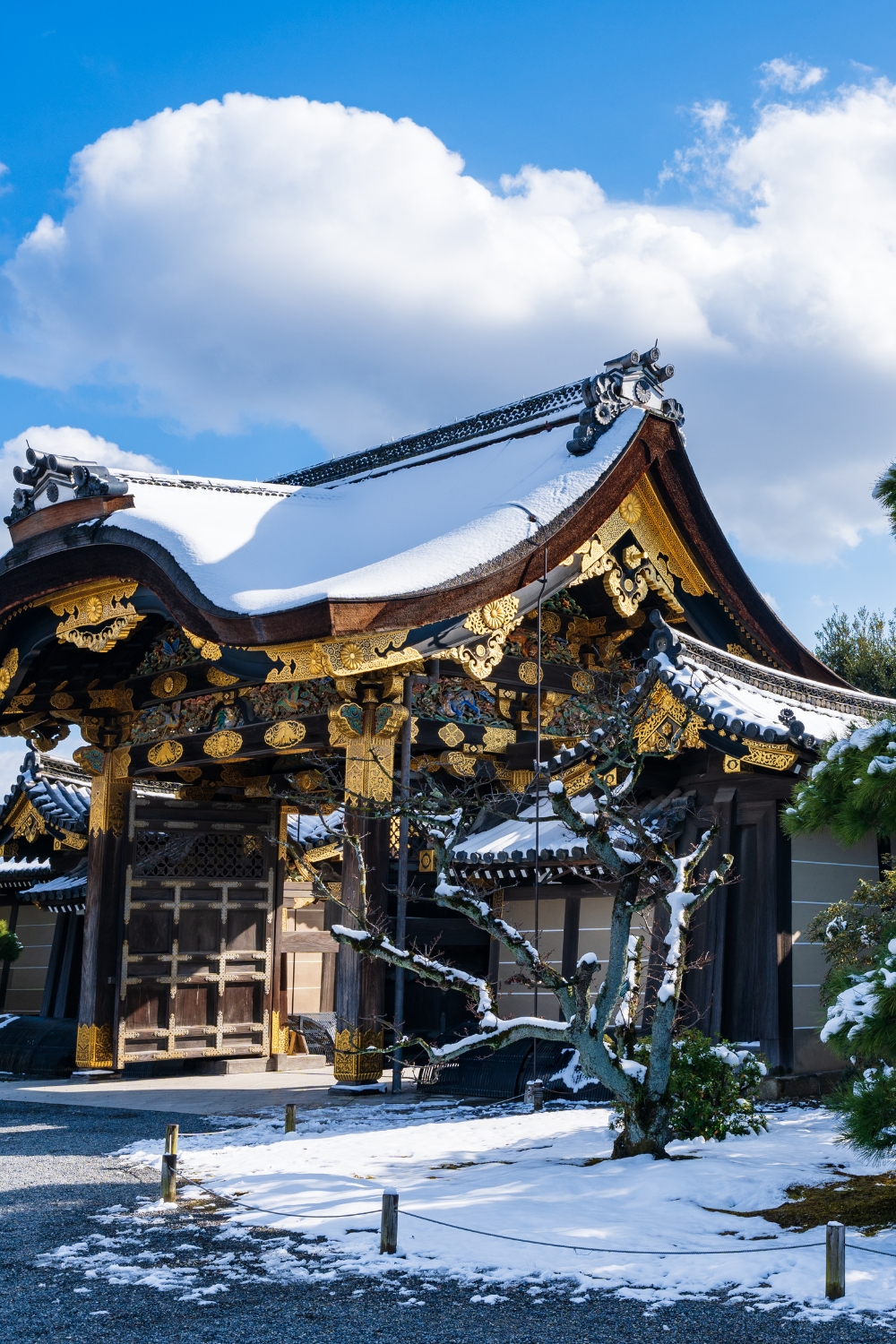
Nijo Castle represents the pinnacle of Japanese palace architecture and political power during the Edo period. This UNESCO World Heritage site showcases the wealth and sophistication of the Tokugawa shogunate through its ornate buildings, defensive features, and meticulously designed gardens.
Political History and Architectural Significance
Built in 1603 as the Kyoto residence of Tokugawa Ieyasu, the first shogun of the Edo period, Nijo Castle served as the symbol of imperial power and political control. The castle witnessed the return of imperial rule in 1867 when the last shogun formally returned power to Emperor Meiji.
The castle’s Ninomaru Palace contains 33 rooms decorated with over 3,600 tatami mats and paintings by masters of the Kano school. The famous “nightingale floors” squeak when walked upon, serving as an early warning system against intruders.
Gardens and Seasonal Beauty
The castle’s gardens represent different periods of Japanese landscape design, from the formal Ninomaru Garden to the more natural Seiryu-en Garden. These gardens showcase the evolution of Japanese aesthetic principles and seasonal appreciation.
Spring brings spectacular cherry blossom displays with over 400 trees of various species, extending the blooming period from March through May. The castle’s evening illuminations during cherry blossom season create magical nighttime experiences.
Entry fee: 620 yen for adults
Special features: Nightingale floors, historical artifacts
Best season: Spring for cherry blossoms
UNESCO status: World Heritage Site since 1994
9. Ryoan-ji Temple – Zen Rock Garden
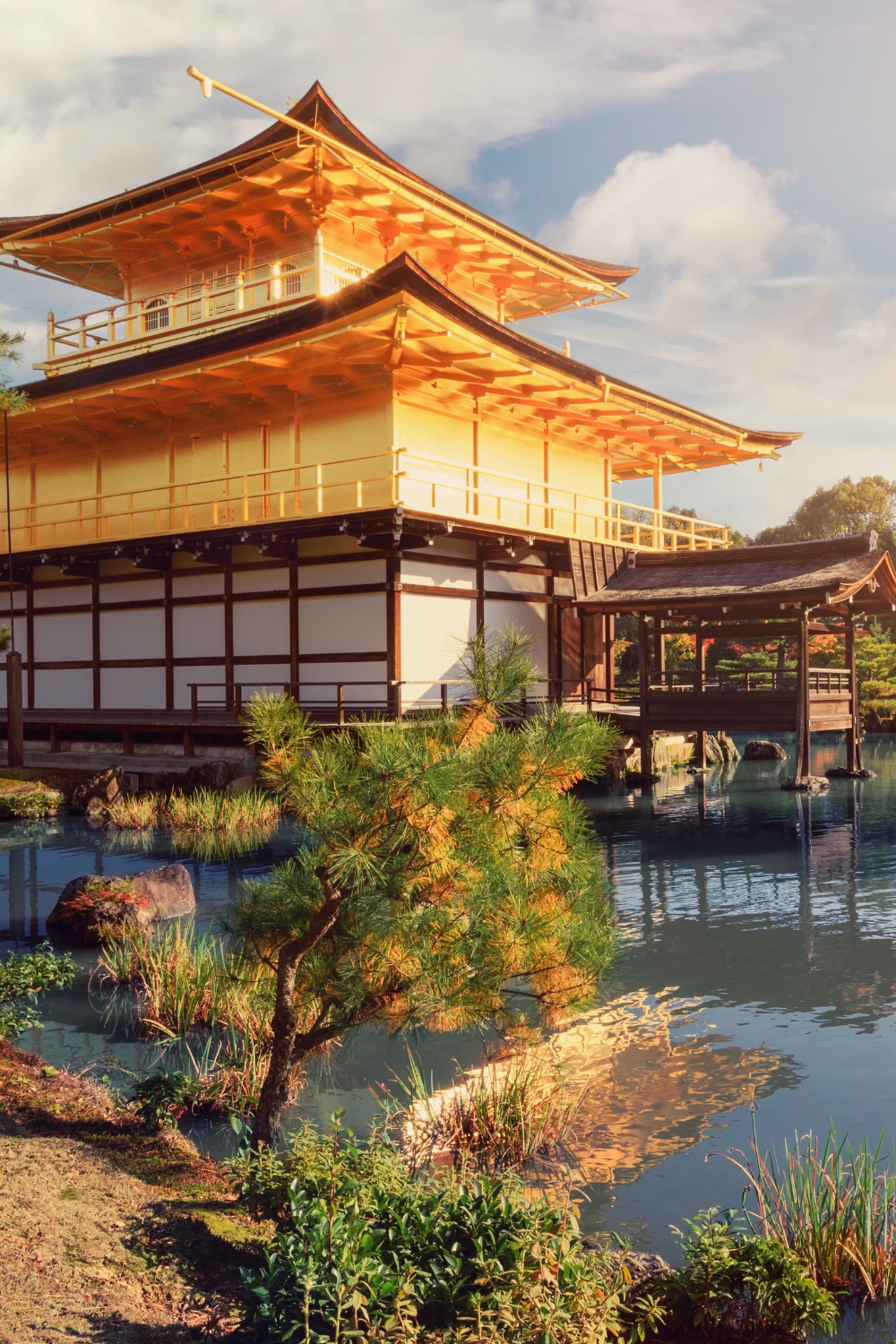
Ryoan-ji Temple houses Japan’s most famous rock garden, a masterpiece of Zen Buddhist design that has puzzled and inspired visitors for over 500 years. This minimalist garden embodies the essence of Zen philosophy through its use of stones, sand, and empty space.
Zen Philosophy and Artistic Expression
The temple’s rock garden consists of 15 carefully placed stones arranged in five groups within a rectangular area of raked white sand. The garden’s design ensures that from any single viewing point, only 14 stones are visible, with the 15th always hidden from view.
This deliberate design reflects Zen teachings about the limits of human perception and the importance of what cannot be seen. The garden encourages meditation and contemplation, with visitors often spending hours trying to understand its deeper meanings.
Historical Significance and Cultural Impact
Created in the late 15th century, the garden has influenced Japanese aesthetics and Western understanding of Zen Buddhism. The garden’s creator remains unknown, adding to its mystique and allowing visitors to focus on the garden’s spiritual rather than historical significance.
The temple itself, founded in 1450, serves as an active Zen monastery where monks continue traditional practices. The combination of spiritual activity and artistic achievement creates a unique atmosphere for contemplation and learning.
Entry fee: 500 yen for adults
Best viewing time: Early morning for peaceful contemplation
Cultural significance: UNESCO World Heritage Site
Meditation: Viewing platform designed for seated contemplation
10. Kyoto Imperial Palace and Park – Royal Heritage
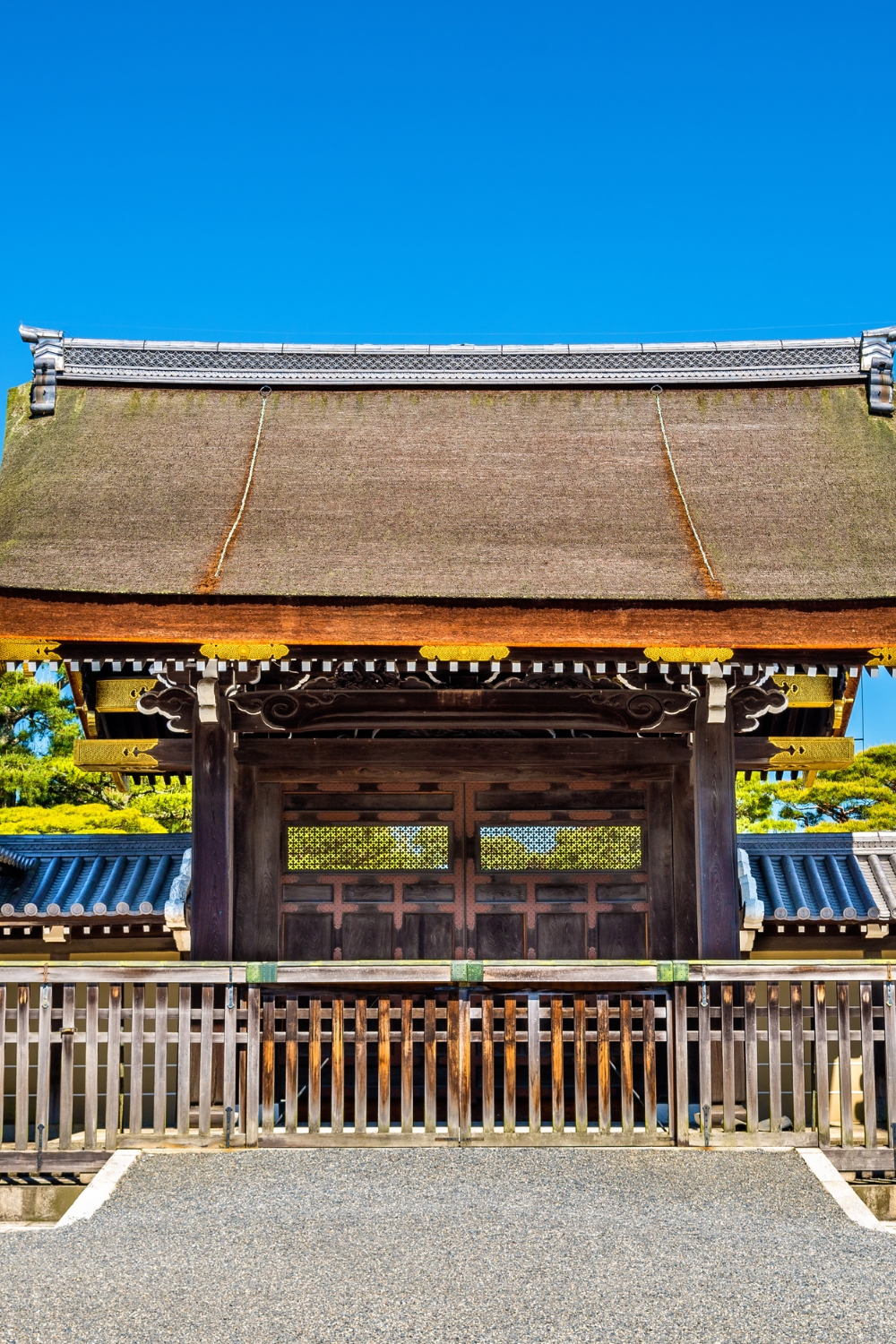
The Kyoto Imperial Palace and its surrounding park provide insight into Japan’s imperial history and offer one of the city’s largest green spaces. This former residence of the Imperial family showcases traditional Japanese architecture and garden design on a grand scale.
Imperial History and Architectural Grandeur
The palace served as the primary residence of the Imperial family until 1869, when the capital moved to Tokyo. The current buildings, reconstructed in 1855, demonstrate the pinnacle of Japanese palace architecture and the ceremonies that defined imperial court life.
The palace complex includes multiple buildings, each serving specific ceremonial or residential purposes. The Shishin-den (main ceremonial hall) hosted the most important imperial ceremonies, while the Seiryō-den served as the emperor’s private residence.
Public Gardens and Seasonal Activities
The surrounding Kyoto Imperial Park (Kyoto Gosho) covers 65 hectares and provides free access to beautiful gardens, walking paths, and historical sites. The park contains over 50,000 trees and serves as a popular location for cherry blossom viewing, with over 1,000 cherry trees of various species.
The park’s wide-open spaces offer relief from Kyoto’s more crowded tourist areas while providing opportunities for jogging, cycling, and picnicking. Traditional Japanese games like kemari (ancient football) are sometimes demonstrated in the park.
Palace tours: Free guided tours available (advance reservation required)
Park access: Free and always open
Best season: Spring for cherry blossoms, autumn for fall colors
Activities: Walking, cycling, seasonal festivals
Planning Your Kyoto Adventure
Getting Around the City
Kyoto’s efficient public transportation system makes visiting multiple attractions convenient and affordable. The city’s bus system covers all major tourist destinations, while the subway and train networks provide faster connections between districts.
A one-day bus pass (500 yen) offers unlimited rides on city buses and proves cost-effective for visiting multiple locations. For longer stays, consider the Kyoto City Bus & Subway Pass for greater flexibility.
Best Times to Visit Different Attractions
Spring (March-May): Perfect for cherry blossom viewing at Philosopher’s Path, Nijo Castle, and Imperial Palace Park. Book accommodations well in advance as this is peak season.
Summer (June-August): Hot and humid weather makes early morning temple visits ideal. The bamboo grove provides cool shade during afternoon heat.
Autumn (September-November): Spectacular fall colors at Kiyomizu-dera and along the Philosopher’s Path. Less crowded than spring but equally beautiful.
Winter (December-February): Fewer crowds and occasional snow create serene temple experiences. Some gardens may have limited hours.
Cultural Etiquette and Temple Visits
Respect local customs when visiting temples and shrines. Remove hats, bow before entering sacred spaces, and maintain quiet, respectful behavior. Photography may be restricted in certain areas, so watch for signs or ask permission.
When encountering geishas in Gion district, observe respectfully from a distance and avoid blocking their path. Photography should be done discreetly and only with permission.
Conclusion
Kyoto offers an unparalleled journey through Japan’s cultural heart, where ancient traditions continue to thrive alongside modern life. From the golden splendor of Kinkaku-ji Temple to the meditative stones of Ryoan-ji’s rock garden, from the vermillion tunnels of Fushimi Inari to the bamboo cathedrals of Arashiyama, each destination reveals different facets of Japanese aesthetics and spirituality.
These ten must-visit places represent just the beginning of Kyoto’s treasures. The city’s greatest gift lies in its ability to provide both spiritual depth and artistic beauty, historical significance and living culture, peaceful contemplation and vibrant experiences.
Whether you spend a few days or several weeks in Kyoto, the city’s layered history and preserved traditions offer endless opportunities for discovery and personal growth. The careful balance between preservation and accessibility makes Kyoto an ideal destination for anyone seeking to understand the essence of traditional Japan.
Start planning your Kyoto pilgrimage today, and prepare to experience why this ancient capital continues to inspire visitors from around the world. The city of temples, gardens, and timeless beauty awaits with its profound wisdom and unforgettable experiences.
